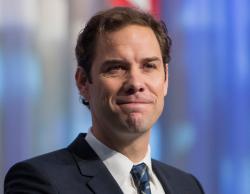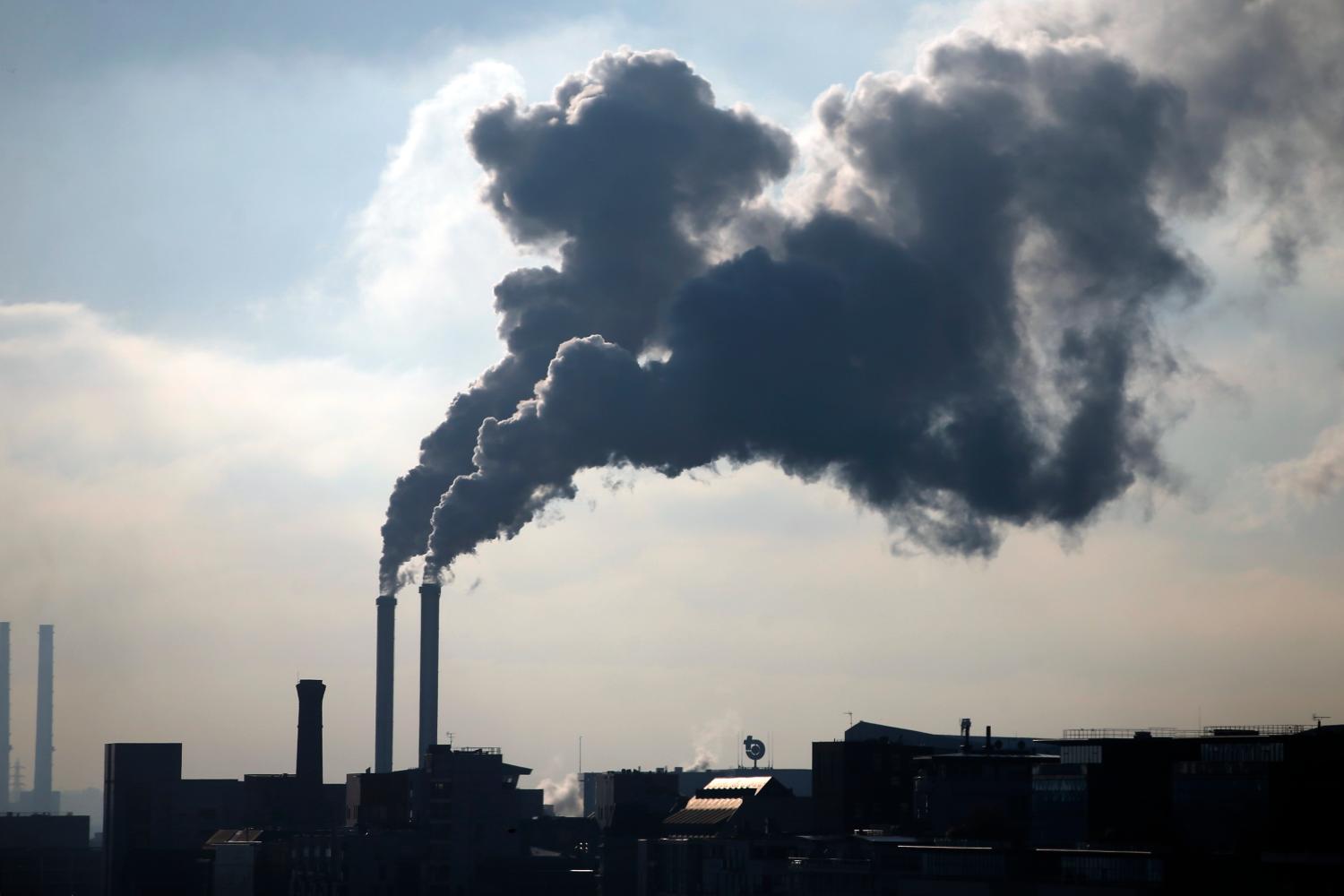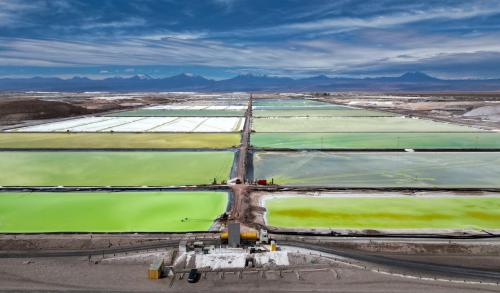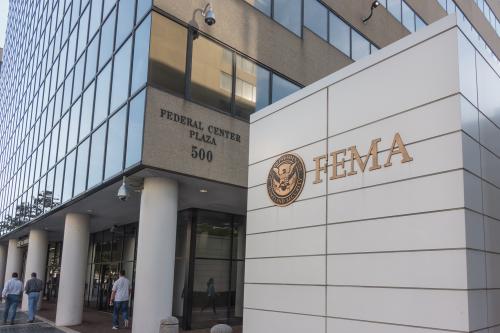At the end of the month, governments from nearly 200 nations will convene in Paris, France for the 21st annual U.N. climate conference (COP21). Expectations are high for COP21 as leaders aim to achieve a legally binding and universal agreement on limiting global temperature increases for the first time in over 20 years. Ahead of this much anticipated event, Brookings experts have compiled a collection of comprehensive short briefs on key issues in climate action, including climate aid and finance, infrastructure, carbon pricing, the relationship between agriculture and climate, and more. You can download the full report here or scroll through the briefs below.
A Transformative End to the Year
2015 has been an unexpectedly positive year for climate change efforts, as the long-floundering U.N. process has finally begun to deliver some of what is needed. Make no mistake: We are still on track to overshoot the limits of our planet’s ability to absorb the fossil pollutants we are pumping into it. But substantial progress is being made, and denying that would be counterproductive to the important cooperation that has occurred.
The Road from Paris
Although there is work still to be done, the Paris COP21 promises to be an important turning point in the fight against climate change and in linking that fight to the broader sustainable development agenda. After years of sharp divisions and stalled actions there is a widely shared recognition of the dangers of delay and greater collective resolve to act at the national and global levels. All major world leaders have signaled their strong support for an ambitious Paris agreement. And it is remarkable that so many of them are coming together on concrete programs of action, including the leaders of the two largest emitting countries—China and the United States.
Pricing Carbon
In 2013, the UNFCCC set a path toward a new agreement for the post-2020 period. This year, negotiations have aimed to solidify that agreement and will culminate in Paris at the COP21 December meetings. So far, climate talks have tackled national emissions targets, global temperature targets, technology transfer, assistance to poor countries for adaptation and mitigation (a.k.a. “finance”), clean energy cooperation, forest preservation, compensation for countries affected economically by mitigation measures, and many other topics. In comparison to those issues, there has been little discussion of the most cost-effective means to reduce emissions: reducing fossil fuel subsidies and pricing greenhouse gas emissions.
The Role of Public Policy in Sustainable Infrastructure
Infrastructure development, economic growth, and climate protection are intimately related. Infrastructure is a key driver of economic growth and development. In the current context of increasing concerns about prospects for global growth, infrastructure investment can play an especially important role, by boosting global aggregate demand today and laying stronger foundations for future growth. Infrastructure is also a key element of the climate change agenda. Done badly, it is a major part of the problem; infrastructure accounts for more than half of global carbon emissions. Done right, it is a major part of the solution, vital to both climate change mitigation and adaptation.
Aid and Climate Finance
In 2009, the Copenhagen Accord was the first effort to spell out the financial implications of a global effort to reduce carbon emissions. Although not a legally binding document, delegates from all countries attending the COP15 meeting agreed to “take note” of the accord. Developed countries made three financial commitments as a result:
1. to provide $30 billion for mitigation and adaptation financing for the period 2010-2012;
2. to mobilize $100 billion per year by 2020; and
3. to make such funding new and additional, and sourced from public and private, bilateral and
multilateral institutions.
Financing Sustainable Infrastructure
A key goal of the U.N. climate change negotiations is to agree on global mitigation actions that will limit global temperature increases to 2 degrees Celsius above pre-industrial levels. Achieving this climate goal will require a transition to a low-carbon economy. Climate finance will be needed to support this transition and to adapt to unavoidable climate change.
Transforming the Global Energy Environment
In the wake of the December 2015 COP meeting in Paris the world will be confronted by a host of energy and environmental policy issues on how to meet the burgeoning projected energy demand for the next 20 years.
Agriculture in the COP21 Agenda
In a few weeks, world leaders and international negotiators will gather in Paris, home of the famed Champs-Élysées, to establish a new generation’s global climate accord. However, the agreement is not likely to delve into the sector-level practicalities of how countries will achieve the relevant targets. From the perspective of agriculture, one of the foremost drivers and burden-bearers of climate change, the COP21 agreement might best be dubbed “Les Champs-Oubliés,” or forgotten fields, since it will largely neglect this fundamental concern of societies everywhere.
United States: A Credible Climate Action Plan, but Political Uncertainty
The United States goes to the UNFCCC meetings in Paris in a good position to accomplish its goals for international cooperation: to reach a pragmatic international agreement that puts in place a framework to contain global warming to no more than 2 degrees Celsius, and which includes action from all countries while also providing flexibility that would allow implementation to reflect national circumstances.
China: Ambitious Targets and Policies
Over the last decade China has been actively engaged in improving energy efficiency and direct interventions aimed at addressing rising carbon emissions. As the world’s largest emitter of greenhouse gases, China has made a number of commitments in the lead up to the meeting of the Conference of the Parties to be held in Paris in December 2015. In its Intended Nationally Determined Contribution (INDC), China committed by 2030:
- To achieve the peaking of carbon dioxide emissions around 2030 and making best efforts to
peak early; - To lower CO2 emissions per unit of GDP (emissions intensity) by 60-65 percent from the 2005
level; - To increase the share of non-fossil fuels in primary energy consumption to around 20 percent; and
- To increase the forest stock volume by around 4.5 billion cubic meters on the 2005 level.
India: Potential for Even Greater Emissions Reductions
In 2013, India emitted 2.4 billion metric tons (GT) of carbon dioxide, making it the third-largest emitter in the world. India ranks in emissions behind only China (10.0 GT) and the United States (5.2 GT). Along with the European Union, these three countries emitted almost 60 percent of the worldwide CO2 emissions in 2013. Thus, India’s October submission of its Intended Nationally Determined Contribution (INDC) to the United Nations was widely anticipated.
Africa: Financing Adaptation and Mitigation in the World’s Most Vulnerable Region
Africa is the continent that contributes the least to global warming in both absolute and per capita terms. Africa accounts for the smallest share of global greenhouse gas emissions—3.8 percent. This compares to the largest emitters like China, the United States, and the European Union, which account respectively for 23 percent, 19 percent, and 13 percent of global emissions. Africa contributes less to global warming than countries such as Russia and India (each accounts for 6 percent of global emissions). In a telling example, the Africa Progress Panel notes that it would take the average Ethiopian 240 years to register the same carbon footprint as the average American. The region’s low contribution to global warming is not surprising, as about two-thirds of its greenhouse emission is from land use, particularly from forest degradation and deforestation tied to the production of charcoal.

















